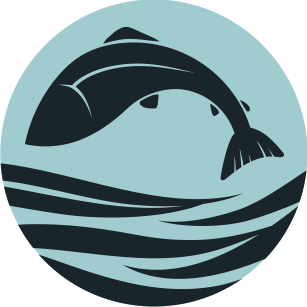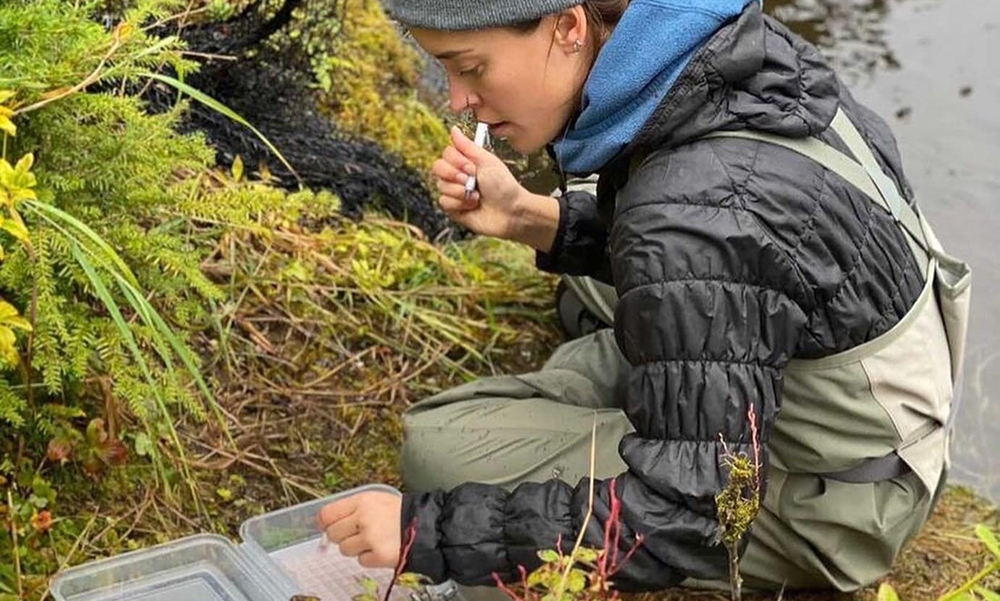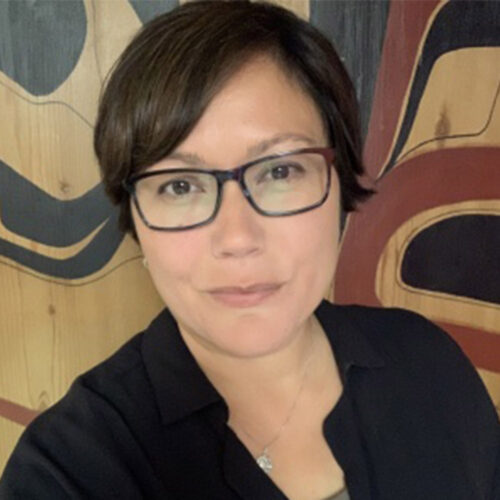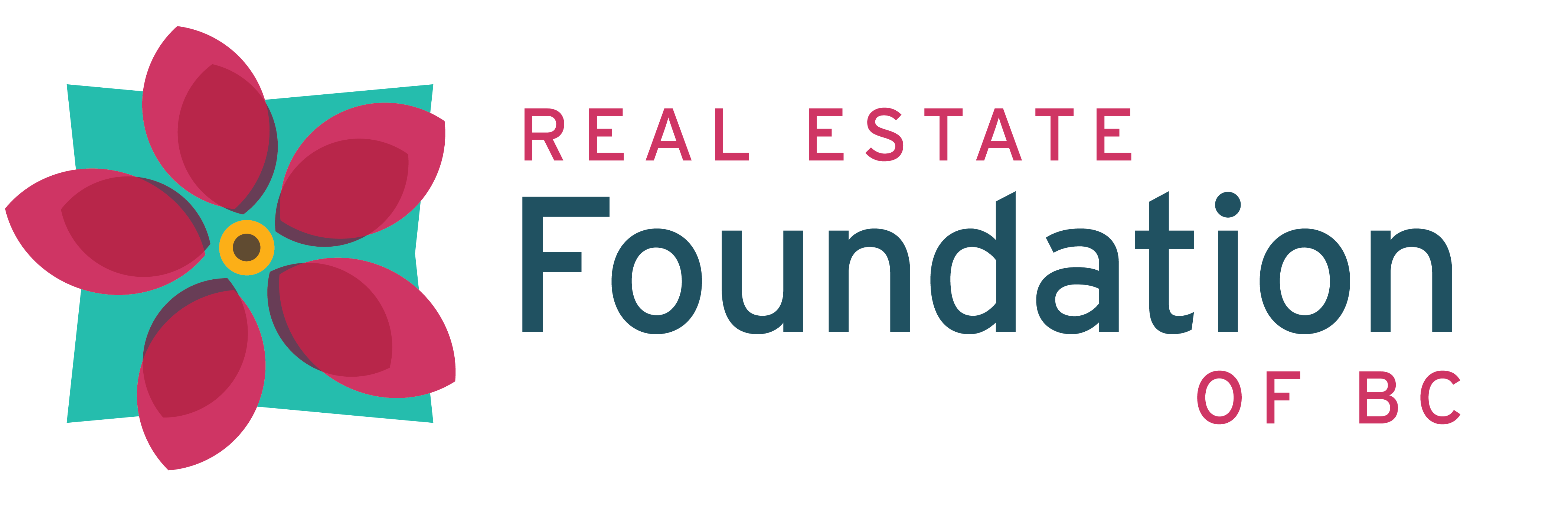Reciprocity and Water
A Conversation with Gord Sterritt and Taylor Wale, Gitksan Members
The Delgamuukw/Gisday Wa (1997) Supreme Court Case thrust the Gitksan and Wet’suwet’en peoples into the world spotlight. Through thousands of pages of evidence of Aboriginal title and thousands of hours of testimonial by Elders and Hereditary Chiefs, the Gitksan and Wet’suwet’en introduced the colonial courts to the Ayookxw (laws) of the Gitksan. This evidence was met with a strong denial on behalf of the Crown government legal counsel. It is this legal foundation both in Gitksan and Wet’suwet’en, and Crown laws that has informed the knowledge and practice of many Gitksan leaders today.
In Gitksan Ayookxw, aks (water) plays a central role in the health of the Lax’yip (territory/land) and provides the freshwater habitat for salmon, which is the cultural and nutritional mainstay of the Gitksan diet. As Senior Indigenous Advisor for the Healthy Watersheds Initiative (HWI), I have had the honour to work with and support 60+ projects in watershed restoration and planning.
As a fellow Gitksan Wilp member, I was interested to learn more about two HWI project leads from our Nation who are active in the field of watershed stewardship and fisheries management. Here is my interview and conversation with Taylor Wale, a fisheries biologist from the Gitksan Watershed Authorities, and Gord Sterritt, executive director of the Upper Fraser Fisheries Conservation Alliance.
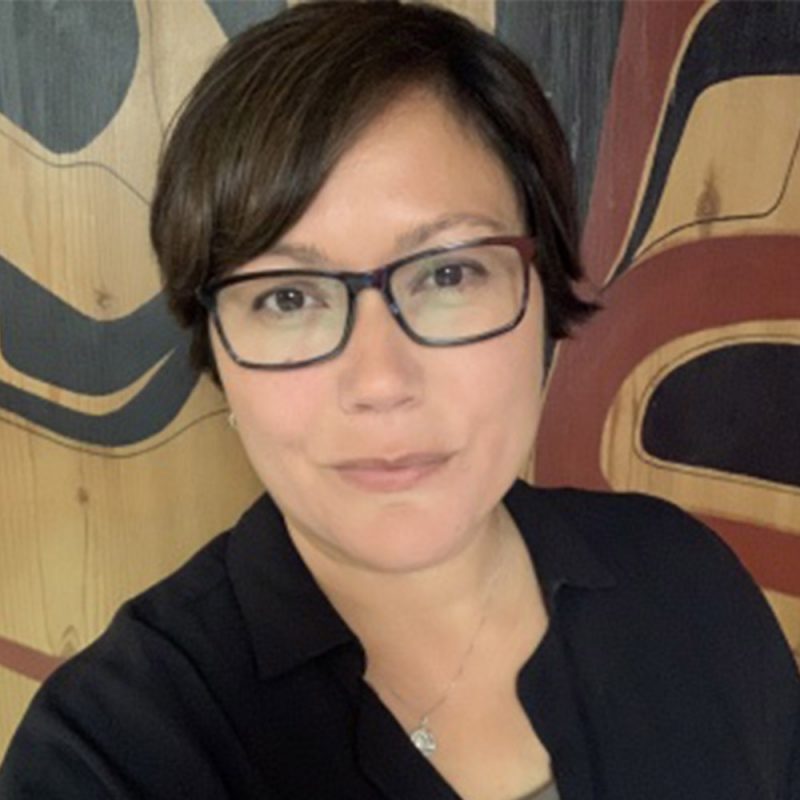
Senior Indigenous Advisor, Healthy Watersheds Initiative

Executive Director, Upper Fraser Fisheries Conservation Alliance
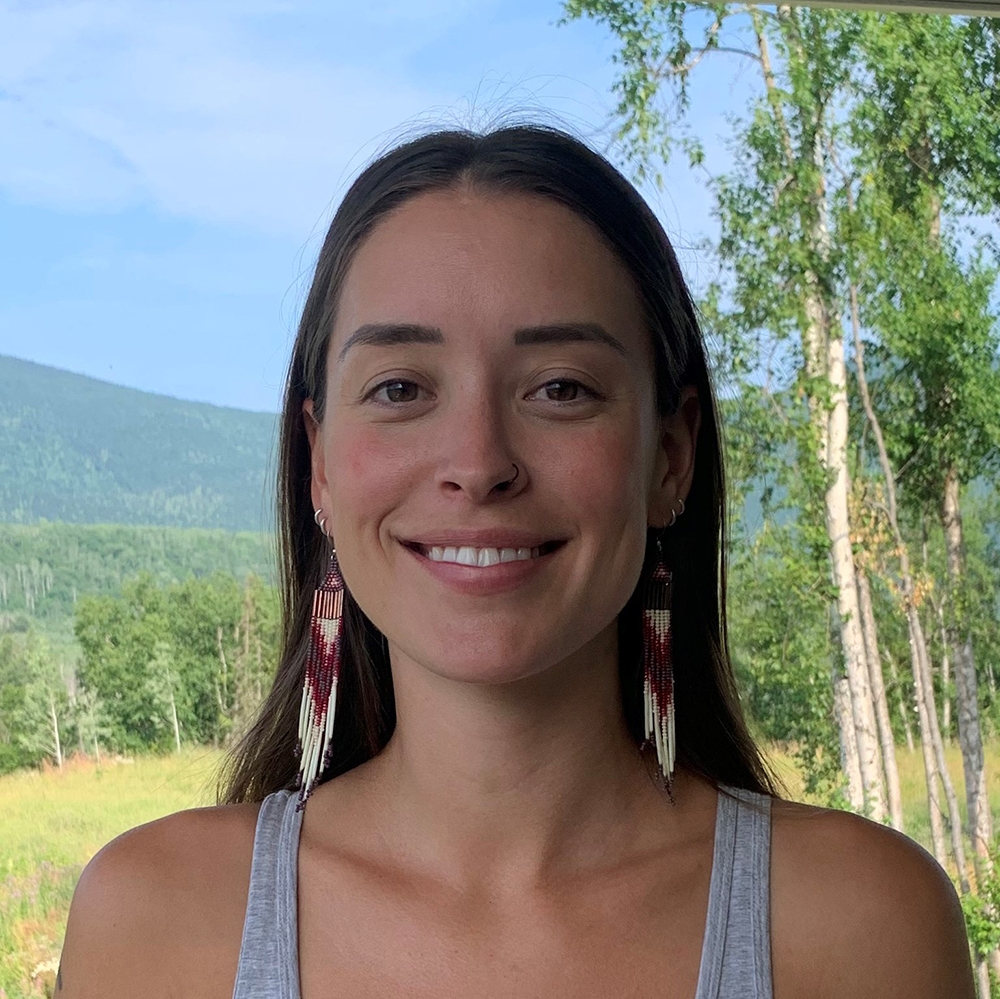
Fisheries Biologist, Gitksan Watershed Authorities
With permission from Taylor and Gord, this interview has been condensed.
TARA: Can you both tell me a little about yourself, your background, what brings you to the work of fisheries and water stewardship?
GORD: Growing up in Hazelton, I travelled a lot with my father, grandfather, and uncles, learning the land. A lot of the interest stemmed from the Delgamuukw court case, tagging along while doing research, learning about the different Lax’yip (territories). I always wanted to work on the land, tried logging and road building for a while, worked in the mills. My interest eventually evolved into working in fisheries, which started around 1997 working on an economic fishery on the Babine River. The connection of that work to the land interested me, so I stayed with it.
TAYLOR: I was raised in Kamloops, growing up we would come home for fishing season every year. It wasn’t until I was of age, had agency of my own, and [as able to] to come home on my own terms and figure out my path, how I wanted to bring myself back in a good way. I went to UBC in the city, tried out business and realized that money and capitalism is not my thing [laughter]. Found my way back home and followed the fish, and that intuition. I had some really strong role models in those formative university years who told me what I should do, so I followed that advice and never looked back.

Digging willow berms along the banks of McCully Creek.
(Photo courtesy Taylor Wale.)
TARA: On that thread, are there specific role models you would like to name who were influential to your current career and work?
TAYLOR: The late Beau Dick took me under his wing for many years. He helped to smash away my imposter syndrome, helped me figure out where I was going. And then Gerald Amos was really important to me as well when I was younger. They are both strong leaders and have such a strong voice, they can relate to everybody, and are so generous with their knowledge, and helped me to stand firm in the teachings. They really gave me the confidence as a young person to have a voice. Then also in my later years, Tara you were a big influence on me and where I wanted to head, you were always someone the younger people talked about – like “goals”.
[Laughter and severe embarrassment of Tara, the interviewer.]
GORD: My role models were my grandfather [the late Neil Sterritt Sr] and my father [the late Neil Sterritt], my uncles were really involved as well. The encouragement from a wide range of people in the Gitksan nation, and teaching me how important fish were to the future of the Gitksan people. Taking that and the values, and transferring it into the other watersheds like the Fraser worked. This includes the work ethic, the openness and transparency, that was instilled in me. Put your head down and just do it, that’s how I was taught.
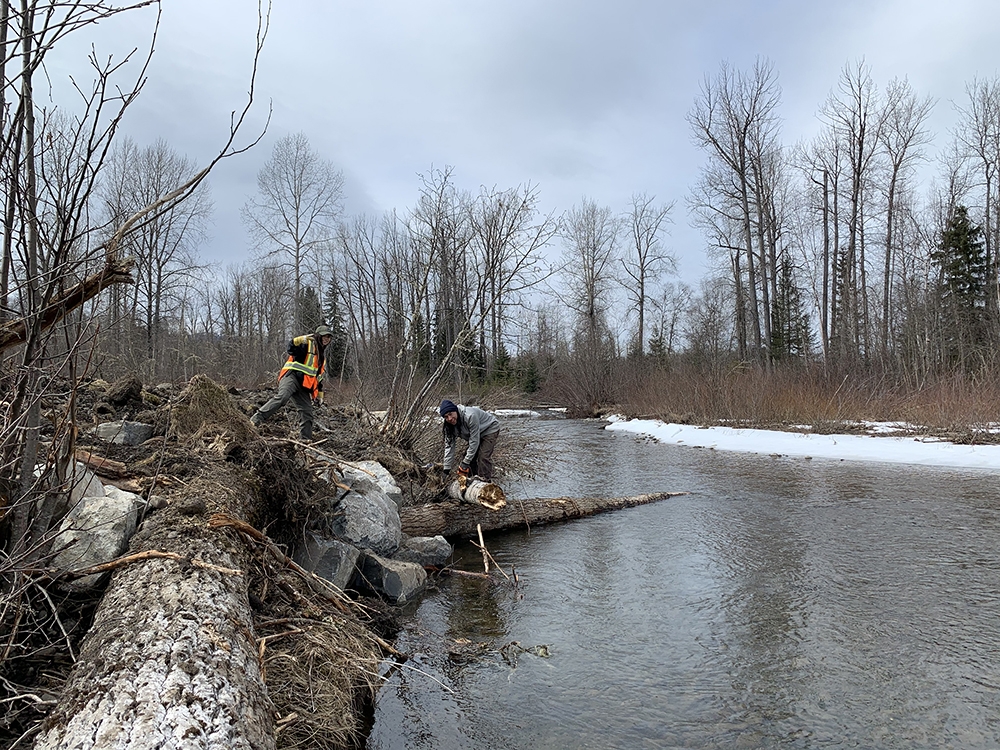
Hailey and Denzel, members of the Gitksan Watershed Authorities project team, secure large woody debris to the banks of McCully Creek. Debris helps to slow water flow, connect rivers and floodplains, and create habitat for fish and animals.
(Photo courtesy Taylor Wale.)
TARA: As Gitksan Wilp members, what do you think are the greatest threats to our water and fish today?
TAYLOR: The displacement of Gitksan people from the land and the waters. We throw around the term ‘land back’, but it does have huge implications on the way that we govern our territories. Of course, there is climate change, urbanization, the commodification of these sacred entities. I think if we were truly given the space to govern on our lands, we would be in a much different scenario right now. That is why I focus much of my work on youth, and how to knock down barriers for youth to get on to the land, and to be those experts, and to witness the systems and be a part of them again. I want to reforge the connections to our lands that have been lost, and I think once we are reconnected to those places again, we would be in a much better place to improve management.
GORD: Climate change is huge. In the Fraser, right now we dealing with temperatures where you shouldn’t be handling the fish at all. These are lethal temperatures to fish, and I am sure the Skeena is seeing similar issues as well. A lot of focus has been on cumulative impacts, and with the work of the Pacific Salmon Foundation and now Healthy Watersheds Initiative, it will at least give more of a chance for fish to survive into the future.
TAYLOR: Absolutely, you think about these climate trajectories that are kind of out of our hands at this point, we can pick away at some pieces to try and slow it down. But really, we are going down this path now and have been for some time now. So, what are the pieces we can actually deal with? In my perspective, it’s habitat. Our wild salmon are in such a detrimental place right now, the genetic diversity of stocks is steadily declining. The best way as Gitksan people we can have an impact is on the ground restoration, contributing and reciprocating to those systems. Climate is terrifying right now. Will our grandkids even know what a salmon run is?
GORD: If we can restore habitat that’s been affected by forestry, wildfires, or ranching, this will increase survival rates hopefully. In the Upper Fraser, we see a lot of impacts from ranching on spawning areas. The work we are doing through HWI is valuable in terms of the broad suite of things we can do to support these fish and ensure they survive into the future.
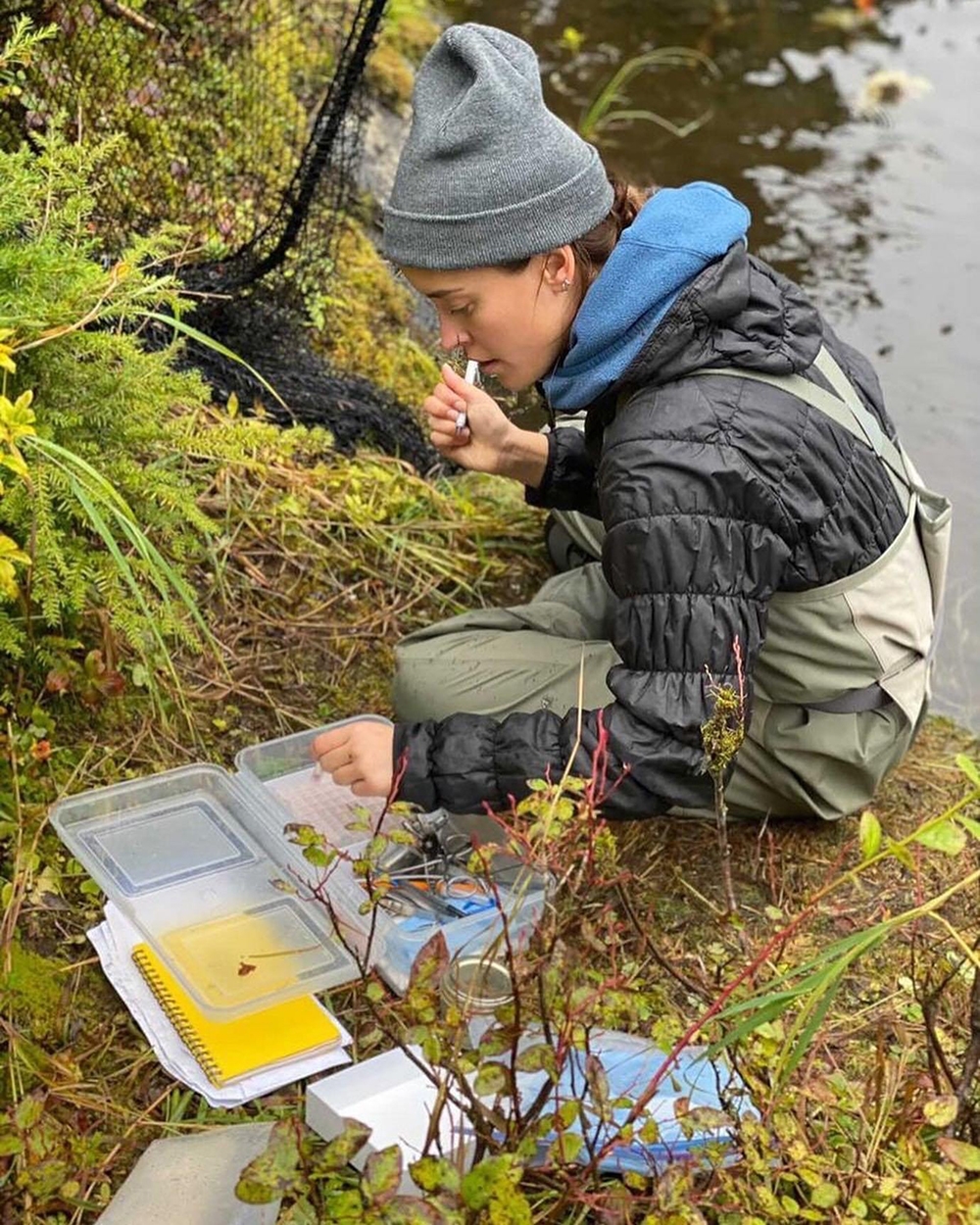
Taylor Wale, collecting water samples in Gitksan territory.
(Photo: Tim Wilson)
TARA: Yes, the cumulative positive effects, as opposed to the cumulative negative effects. Taylor, as a young Gitksan fisheries biologist what do you see as the best way to inspire our youth to begin careers in fisheries and water stewardship?
TAYLOR: My approach has been bringing youth out on the land, and trying to help forge that reconnection to place. The different roles we play, don’t matter as much – whether it’s a biologist, a manager, a politician or leader, what matters is that connection to the land and water. As a young person, you can look at your Wilp and community and ask ‘where are the gaps in knowledge and skills, and where can I fit in with my skills to help out’? It’s also important to show that they can make space for other youth too. Everywhere I go this summer with our HWI project, I bring two youth with me. Our sovereignty is right there for us to grab, our territories are right there for us to govern, it’s up to us to find our voice and find our place as young people.
TARA: Taylor, where do you see the future of watershed stewardship and co-management in 20 years? What are your goals and vision for the Gitksan Watershed Authorities?
TAYLOR: I am a bit of an extremist, and I hope soon these [colonial] systems will fall, and Wilps will be motivated to be on their territories beyond the main stem [Skeena] and back onto the tributaries, fishing and protecting them. My long-term vision is that the experts will be the Wilp members, they can record their observations and give it to us to analyze and provide resources. I see Gitksan Watershed Authorities as technical supports in the future. For years we have centralized knowledge, and now we can just give that knowledge back to the Wilps for them to govern their Lax’yip. I’m a scientist, so I have tools. But I am not the expert, and I don’t want to be the expert. I just want to facilitate for the Wilps.
TARA: I don’t want to make you feel old or anything Gord, but with over 20 years’ experience in this field, what is your advice to young Gitksan or other Indigenous people seeking to get involved in this work?
GORD: I started this work when I was 15! [laughter] I encourage anyone who wants to get involved in fisheries or water management, anything to do with fish, to follow their dreams and not get discouraged. If someone wants and is interested, I encourage them to try their hand at first before deciding to make a career of it. No matter how daunting it may seem, it’s a fun and rewarding career.
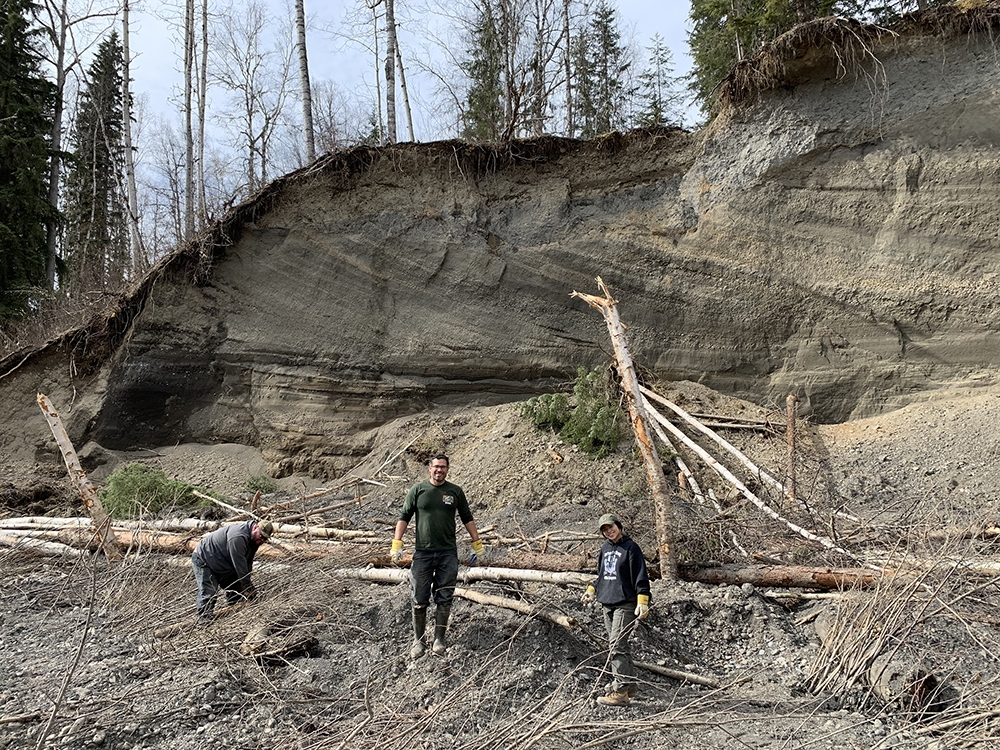
Rob, Tim, and Hailey work to reintroduce native plants that will stabilize the creek and provide food for fish and animals.
(Photo courtesy Taylor Wale.)
TARA: What cultural teachings or Gitksan knowledge do you bring to your work?
TAYLOR: A big one I have to harp on with non-Indigenous experts, is reciprocity. For these experts who gain in their career from Indigenous knowledge and the natural systems in our territory, reminding them to give back. Every piece of data they collect from our water, they need to give back to community or land in some way. Reminding them that this is all Gitksan knowledge they are making a living off of. If I am making the effort to take two youth with me everywhere I go, you should be bringing four. Acknowledging non-Indigenous people’s place of privilege, reminding them that water is governance, water is a living thing. This has changed the practice of some of the scientists we work with.
GORD: Learning from my uncle Percy, he was a big influence, he taught me about our Wilp territory and how to speak about it. Understanding that the management aspects of our territories, has allowed me to speak with confidence when I work for other nations and their territories [in the Fraser River watershed]. I learned that when I am speaking, if I speak out of turn, I have to welcome being corrected or being chastised.
TARA: I think you said ‘welcome being chastised’ [laughter] that is really cool. A lot of people nowadays are very afraid to say the wrong thing, or to be wrong and corrected. So what you are sharing is a cultural teaching of being Gitksan, we have all learned through those hard moments.
GORD: I have always been mindful, be careful what you say, be respectful. Through the recent initiatives like the Big Bar Slide governance, I made up my mind that I have to be completely open to being chastised if I get something wrong, and I will take my lumps and learn from it and go from there.
TAYLOR: So true, when I first came home and was a summer student, my boss said ‘we are going to throw you to the wolves’ you are going to host a community meeting on fisheries. I was given a script and a speech and couldn’t stray from it, and sure enough I got roasted. So I took it, answered the questions and afterwards one of the matriarchs came up to me and said ‘you took that shaming very well, we are very proud of you’. [laughter] That’s what I impart on the youth, you are going to get roasted and that’s ok.
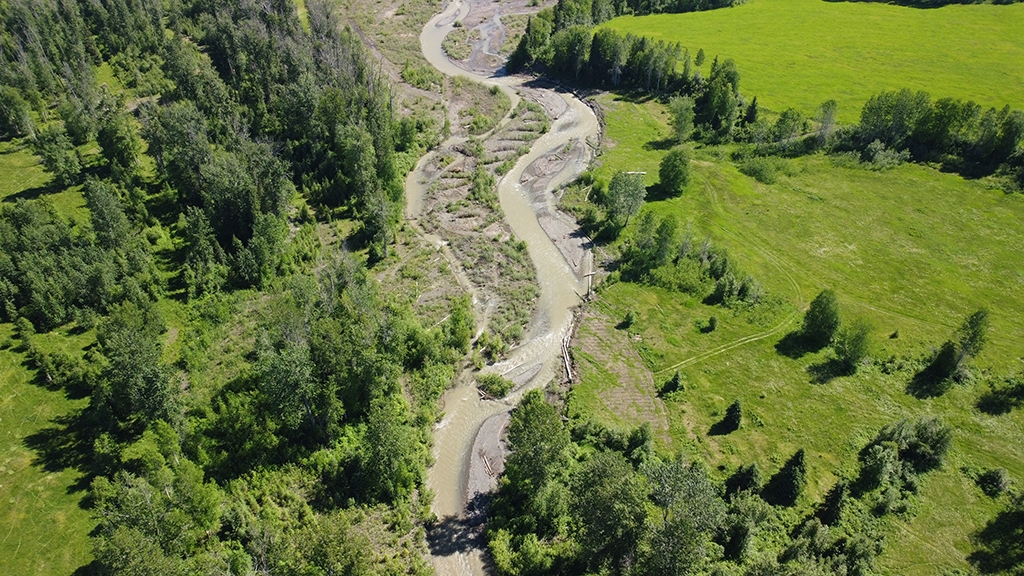
Aerial view of planting progress along McCully Creek.
(Photo courtesy Taylor Wale.)
TARA: Can you both briefly describe your Healthy Watersheds Initiative projects?
TAYLOR: Our HWI project is focused on McCully Creek, a foundational project to start doing more water restoration in our territories. This has been a huge collaborative effort with the Wilp members, community members, Gitksan Watershed Authorities and technical experts, government, and the adjacent property owners. What is so great about this project is that everyone is on site together and we have to share perspectives, develop solutions, and at the end of every day we have to come back to what we all agree on, which is protecting salmon. This fund has been a catalyst for us to all work together on this one system. We talk about restoration, but we don’t always have the resources to do the effectiveness monitoring. So with HWI we have been able to train up six people and hire them, its been such a great opportunity. Now we can take the learnings from McCully and apply them to Date Creek, to Nangeese, and other bigger waterways. Six new staff for our small organization is a big deal, and so we are building capacity and learning how to delegate better, and learning who we can lean on more in the future.
GORD: Fish habitat is key to fish health, and through the HWI we have been able to go from piecemealing projects with DFO funding to making a much bigger impact and really advanced the work to the point that government can’t ignore it anymore. For example, the Endako Weir project and the Yinka Dene Water Laws. These can continue to evolve into longer-term projects and increase healthy fish habitat, increase survival rates. That’s exciting for me.
With the Endako Weir, it kind of goes against conventional-thinking project where most people are taking down dams or infrastructure. But with climate change, we really have to look at each river system on its own and what is needed to adapt to climate change and help fish. Building a weir at the outlet of Burns Lake is really important to help a unique stock. The team that we have working on these projects is top notch, so I have total trust in them. And just like Taylor was saying, applying the learnings from these projects to other creeks and rivers is very important.
With the Chilako project, people have seen what we are doing and want to apply it to their area. The challenges and the areas we work in can seem so daunting, so vast, but when you can learn from others, I think that is what is exciting about Healthy Watersheds Initiative. Hopefully we can expand on this in the future, and this first year of HWI can provide the baseline for that.
